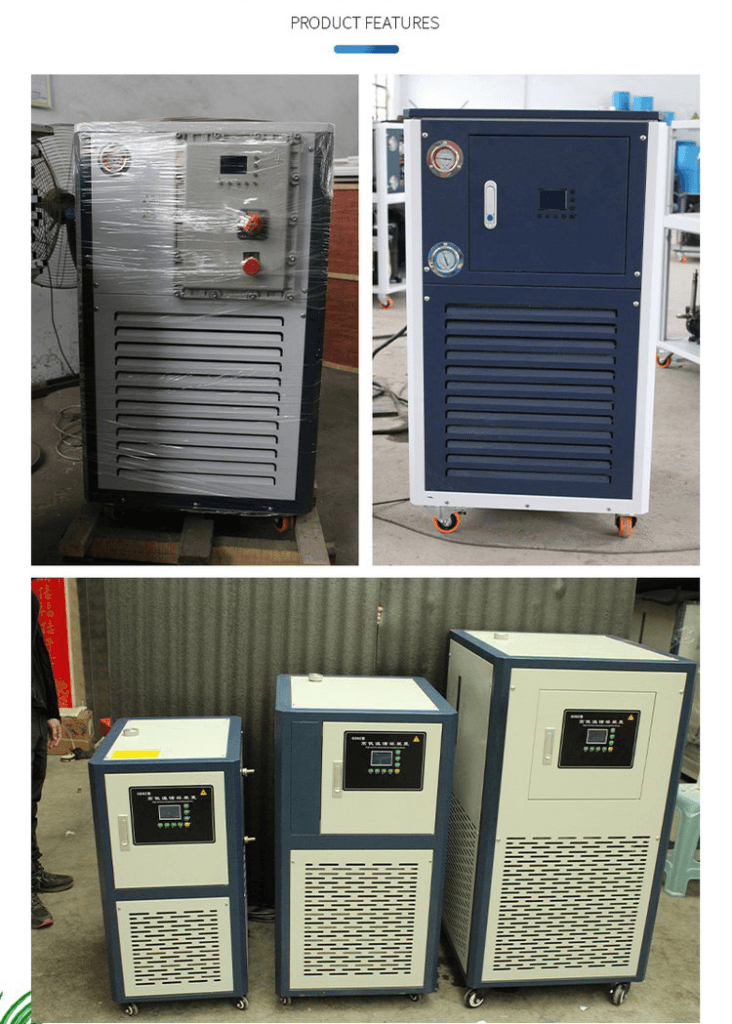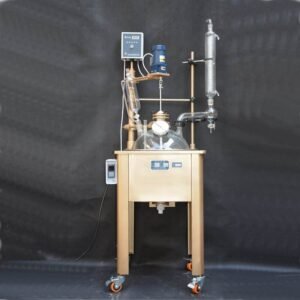Discover how the Falling Film Evaporator offers unparalleled efficiency for heat transfer and evaporation processes across various industries.
The Falling Film Evaporator (FFE) has proven to be one of the most efficient and cost-effective methods for large-scale evaporation processes, offering significant advantages in thermal efficiency and energy conservation. This article delves into the operational principles, key features, and diverse applications of the Falling Film Evaporator, focusing on how this equipment has become a game-changer in industrial applications, including chemical, pharmaceutical, and food processing sectors.

Introduction to the Falling Film Evaporator
In many industrial processes, the evaporation of solvents or liquids is crucial for concentration and separation. The Falling Film Evaporator is designed to provide an efficient solution for these evaporation needs by creating a thin film of liquid that flows down vertical tubes. The liquid is typically heated at the outer surface of the tubes, which optimizes heat transfer efficiency and reduces the chances of fouling. This mechanism allows the FFE to operate at lower temperatures while achieving higher evaporation rates than traditional methods.
Key Advantages of the Falling Film Evaporator
One of the standout benefits of the Falling Film Evaporator is its energy efficiency. By spreading the liquid into a thin film, the evaporator maximizes the heat transfer area, which accelerates the evaporation process while minimizing energy consumption. This results in significant cost savings over time, particularly for industries with high-volume processing needs.
Additionally, the FFE’s design minimizes thermal degradation of heat-sensitive materials, making it an ideal solution for food, pharmaceutical, and chemical industries. The high heat transfer rates and shorter residence times further enhance the product quality by preserving the integrity of the ingredients being processed.
Application of the Falling Film Evaporator in Various Industries
Chemical Industry
In the chemical industry, the Falling Film Evaporator is frequently used for solvent recovery, concentration of acids, and other chemical processing applications. It helps achieve a high level of efficiency in handling volatile solvents, thereby improving safety and reducing environmental impacts. The evaporator’s ability to manage a wide range of operating temperatures and pressures makes it adaptable for diverse chemical processes.
Pharmaceutical Industry
The pharmaceutical industry also benefits from the efficiency of the Falling Film Evaporator. Many pharmaceutical processes require the evaporation of solvents to concentrate active ingredients or prepare specific formulations. The evaporator’s ability to perform at low temperatures while maintaining high efficiency is particularly beneficial when working with sensitive compounds that might degrade under excessive heat.
Food Processing
In food processing, the Falling Film Evaporator is used to concentrate juices, dairy products, and other liquid food items. By providing a method that prevents overheating and maintains the flavor and nutritional content of the products, FFEs are integral in producing high-quality, concentrated food ingredients. Moreover, they help maintain a consistent and high-quality output, which is crucial in the food industry.
Factors to Consider When Choosing a Falling Film Evaporator
When selecting a Falling Film Evaporator, it is essential to consider several factors to ensure optimal performance. The first consideration is the operating temperature range, which can vary depending on the specific application. Some models are designed to operate efficiently at temperatures as low as -60°C and up to +200°C, making them versatile for a wide range of processes. The temperature stability of the system, often rated at ±1°C, ensures consistent performance and product quality.
Another key factor is the power capacity. The Falling Film Evaporator generally comes with multiple power configurations, allowing you to select the model that best suits your needs. The AKGD-10L Dual Function Circulator for Cooling and Heating, for instance, offers both cooling and heating capabilities, with a power supply of 220V/50Hz, providing a total power of 6.4 kW. This makes it ideal for high-demand applications, including those in the pharmaceutical and chemical industries.
Additionally, the cooling power of 2.2 kW and heating power of 4 kW provide the flexibility to manage various operating conditions. The system’s air-cooled method of cooling also ensures that it remains efficient in maintaining stable temperatures without excessive energy consumption.
How the Falling Film Evaporator Works
The operation of a Falling Film Evaporator begins by introducing a liquid feed at the top of the vertical tubes, which are heated by an external source. The liquid forms a thin film as it flows downward, allowing for enhanced heat exchange. This thin film maximizes the surface area in contact with the heating surface, enabling rapid evaporation of volatile components.
As the liquid moves down the tubes, the heat causes the solvent to evaporate, and the vapor is then collected and condensed for further processing. The remaining liquid, now concentrated, can either be discarded or further processed, depending on the requirements of the application.
Maintaining Optimal Performance of the Falling Film Evaporator
Regular maintenance is crucial for maintaining the efficiency and longevity of the Falling Film Evaporator. The system should be checked periodically for any signs of fouling or scaling, as these can reduce heat transfer efficiency and lead to system failures. Cleaning the tubes and ensuring proper lubrication of the moving parts will help prevent these issues and extend the equipment’s operational lifespan.
Additionally, operators should ensure that the evaporator is being used within the recommended temperature and pressure ranges to prevent overloading the system. Monitoring temperature stability is essential for preventing damage to sensitive materials and ensuring consistent product quality.
Conclusion
The Falling Film Evaporator is an indispensable tool in many industries, offering a cost-effective, energy-efficient solution for evaporation and concentration processes. Its ability to maintain high efficiency at low temperatures makes it ideal for applications that require precise control and minimal thermal degradation of materials. With applications spanning chemical, pharmaceutical, and food industries, the FFE continues to be a pivotal technology for optimizing evaporation processes.
For more information on the Falling Film Evaporator and its applications, visit the product page at EquilRxnLab, where you can explore the features, benefits, and specifications of our advanced equipment.
Follow us on YouTube, Instagram, and Facebook for updates, and check out our full product catalog here. For inquiries, feel free to contact us.



